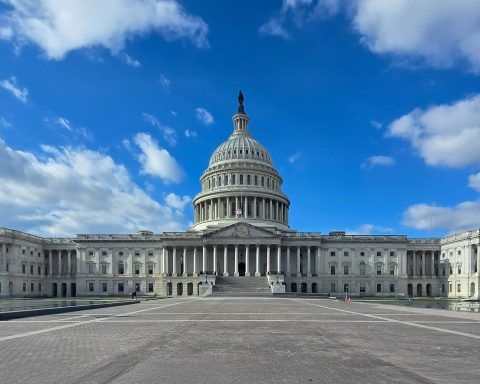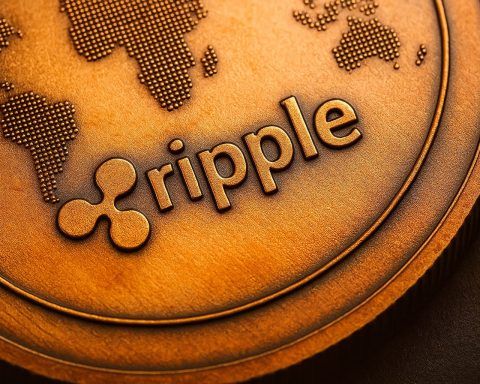- Circle Internet Financial’s NYSE IPO on June 5 priced at $31 per share, opened at $69, surged about 800% to over $270 within two weeks, pushing Circle’s market cap above $60 billion and the deal was oversubscribed roughly 25×.
- Coinbase and Kraken secured MiCA licenses to operate across all 27 EU member states (Luxembourg for Coinbase, Ireland for Kraken), and Kraken launched the Krak mobile app enabling transfers across 110 countries in 300+ assets.
- Mastercard announced partnerships to integrate stablecoins—USDC, Paxos USDP, PayPal PYUSD, and FIUSD—across its payments network, while Fiserv launched FIUSD for institutional use and partnered with PayPal for interoperability with PYUSD.
- Kalshi closed an $185 million funding round at a $2 billion valuation, and Polymarket raised $200 million at a $1 billion valuation in June.
- Digital Asset secured $135 million in strategic funding to onboard more institutions onto its Canton Network.
- During June, institutions accumulated over 18,000 BTC; MicroStrategy added 10,345 BTC (~$1.1 billion) to reach more than 150,000 BTC; Japan’s Metaplanet acquired 4,545 BTC, while Texas approved an investment in a Bitcoin reserve and Brazil advanced a bill to hold Bitcoin as a sovereign reserve asset.
- Senate passed the GENIUS Act on June 17 to create a federal framework for stablecoins, with the House working on a counterpart TRUST Act and the Digital Asset Market Structure CLARITY Act debated in June.
- IRS delayed crypto broker reporting on Form 1099-DA to 2027, the DOL rescinded its 2022 guidance discouraging crypto in 401(k)s resulting in a neutral stance, and the FHFA issued guidance allowing verified crypto holdings on regulated exchanges to count as mortgage reserves.
- MiCA became fully applicable in 2025 with Coinbase and Kraken obtaining EU licenses, France passed a law governing crypto collateral pledging, and the UK FCA released consultation papers on stablecoins and a tailored crypto regime.
- Hong Kong passed the Stablecoins Bill on May 21, 2025 establishing a licensing regime; Vietnam enacted a Digital Tech Industry law recognizing cryptocurrency as an asset class effective January 1, 2026; Ripple’s XRP Ledger gained an EVM sidechain via Wormhole to enable cross-chain asset transfers; and Ledger unveiled a Recovery Key NFC smartcard to recover private keys offline.
June and early July 2025 were exceptionally eventful for blockchain and distributed ledger technology (DLT). The period saw landmark corporate milestones, surging institutional interest, major regulatory moves, and growing real-world adoption across sectors. “June proved to be a powerhouse month for the crypto world,” with record investment inflows, a blockbuster stablecoin company IPO, new stablecoin launches, and key legislation, signaling that blockchain is increasingly mainstream [1]. Below is a detailed report of the notable news, industry forecasts, regulatory updates, innovations, expert commentary, and adoption trends during June and July 2025.
Major News & Announcements (June 2025 – Early July 2025)
Major developments in this period included unprecedented market debuts, strategic expansions by exchanges, and fintech forays into digital assets:
- Circle’s Blockbuster IPO (June 5): Stablecoin issuer Circle Internet Financial (issuer of USDC) went public on the NYSE, pricing at $31/share [2]. The stock opened at $69 (over 2× IPO price) and, within two weeks, “jumped 800% to trade over $270,” pushing Circle’s market cap above the $60 billion supply of USDC [3] [4]. By mid-June, Circle’s share price closed near $200, a ~6× gain, reflecting fervent demand for crypto-focused equities [5]. The IPO was oversubscribed 25× – a strong vote of confidence in the sector [6]. Reuters noted this “blowout debut” marked one of the most successful crypto IPOs ever [7], signaling renewed institutional appetite in blockchain infrastructure.
- Crypto Exchanges Expand in Europe: Two major U.S. crypto exchanges secured EU-wide licenses under MiCA, Europe’s new crypto framework. Coinbase obtained a Markets in Crypto-Assets (MiCA) license through regulators in Luxembourg, and Kraken did so via the Central Bank of Ireland [8] [9]. These licenses (among the first under MiCA) allow them to serve customers across all 27 EU countries. In tandem, Kraken launched a new product, the “Krak” mobile app, an all-in-one global money app enabling transfers across 110 countries in 300+ assets (crypto, stablecoins, and fiat) [10] [11]. This underscores exchanges’ strategic pivot into regulated global offerings as clear rules emerge in Europe.
- Traditional Finance Embraces Stablecoins: Legacy payment and fintech giants announced major stablecoin initiatives. Mastercard, a top U.S. card network, revealed partnerships to integrate multiple stablecoins (USD Coin, Paxos’ USDP, PayPal’s PYUSD, and the new Fiserv FIUSD coin) across its payments network [12] [13]. In June, Fiserv, a Fortune 500 fintech and chartered bank, launched the FIUSD stablecoin aimed at institutional use, and partnered with PayPal to ensure FIUSD’s interoperability with PYUSD for global transfers [14] [15]. Mastercard also teamed up with Chainlink to enable its 3+ billion cardholders to purchase crypto on-chain via secure fiat-to-crypto conversion, leveraging Chainlink’s infrastructure [16] [17]. These announcements by mainstream finance players illustrate a pivotal push to bring stablecoins and crypto payments to a mass audience.
- Crypto Unicorns & Funding News: The crypto startup ecosystem saw major fundraising. Decentralized predictions market Kalshi closed a $185 million round at a $2 billion valuation (backed by Sequoia, Paradigm, etc.), to expand its regulated event trading platform [18]. Rival platform Polymarket similarly raised $200 million at a $1 billion valuation in June [19] [20]. Enterprise blockchain firm Digital Asset (creator of the Canton Network for tokenizing financial assets) secured $135 million in strategic funding to onboard more institutions onto its DLT network [21]. The return of private token sales was another trend – e.g. World Liberty Finance raised $100 million for its USD₁ stablecoin, and Eigen Labs (developer of EigenLayer staking protocols) raised $70 million to advance its zero-knowledge tech [22]. In total, blockchain/Web3 startups raised $1.15 billion across 140 deals in June 2025, a 3% uptick in capital month-over-month [23] – indicating investors’ renewed confidence in the sector.
- Bitcoin & Crypto Asset Accumulation: Institutional and corporate adoption of Bitcoin accelerated. As Bitcoin’s price neared a new all-time high in June, public companies bought over 18,000 BTC during the month [24] [25]. MicroStrategy – the pioneer of corporate Bitcoin treasuries – added 10,345 BTC (spending ~$1.1 billion) to bring its total holdings above 150,000 BTC [26]. Japan’s Metaplanet acquired 4,545 BTC in June (hitting its 10,000 BTC target ahead of schedule) [27]. Even state and national governments signaled interest: Texas approved an investment in a Bitcoin reserve (see Regulatory Updates), and Brazil advanced a bill to allow holding Bitcoin as a sovereign reserve asset [28]. These moves underscore growing trust in Bitcoin as a long-term store of value by both companies and governments.
Industry Forecasts & Market Trends
June–July 2025 yielded bullish forecasts and notable market trends for blockchain and crypto assets:
- Stablecoin Growth Projections: The success of Circle’s IPO and impending U.S. regulation fueled optimism about stablecoins’ future. Analysts at Bernstein forecast that stablecoin supply could surge ~1,500% over the next decade to ~$4 trillion, as digital dollars expand beyond crypto trading into mainstream payments, remittances, and decentralized finance [29] [30]. In a June 30 report, Bernstein’s team called Circle stock a “long-term must-hold” and set a $230 price target, citing Circle’s first-mover advantage as the first publicly traded stablecoin issuer poised to capture roughly 30% of the global stablecoin market [31] [32]. They noted stablecoins are becoming core financial “payments infrastructure” – an analysis echoed by Barclays and others once clear laws are in place [33] [34].
- Record Institutional Inflows: Traditional investment vehicles for crypto saw record inflows in mid-June. Bitcoin exchange-traded funds (ETFs) experienced an eight-day streak of net inflows from June 10–18, totaling $2.4 billion [35] [36]. From June 8–13 alone, U.S. Bitcoin ETFs pulled in $1.37 billion, reversing weeks of outflows [37] [38]. BlackRock’s Bitcoin ETF (IBIT) led with cumulative inflows reaching $46.9 billion since its 2024 launch [39]. Ethereum ETFs also saw steady investments, with a 19-day inflow streak in June bringing in $1.4 billion [40] [41]. Institutional demand was further evidenced by ETF approvals (see Regulatory Updates) and by corporates adding crypto to balance sheets. These trends suggest that big investors anticipate future upside, with crypto products now seen as mainstream investment assets.
- Crypto Venture Funding Rebounds: After a bear-market dip, venture capital interest in crypto is surging back. June 2025’s $1.15 billion startup funding total was up 3% from May, and deal counts jumped 9% [42]. Investors are increasingly using hybrid equity/token financing models – blending traditional venture equity with token allocations – to back Web3 startups [43]. Sectors attracting major capital include regulated prediction markets (Kalshi, Polymarket) and enterprise blockchains (Digital Asset’s Canton network) [44] [45], as well as infrastructure for privacy and scalability (e.g. Zama’s $57 million round for homomorphic encryption tech [46]). Analysts expect this funding momentum to continue into H2 2025, intensifying competition in niches like on-chain prediction markets and further development of institutional-grade DLT networks bridging traditional finance with crypto [47].
- AI and Blockchain Convergence: Industry analysis in late June highlighted the synergies between artificial intelligence and blockchain. A report by an institutional market maker posited an “increasingly important and symbiotic relationship between crypto and AI.” As AI development shifts from infrastructure to applications, blockchain networks could provide decentralized training power, data monetization via tokens, and trustless execution of AI agents [48] [49]. The report argued this convergence will be a defining tech trend of the decade, unlocking new value: for example, using blockchain tokens to reward sharing of data for training AI models, or running AI algorithms on-chain for transparency and composability [50] [51]. The prediction underscores a broader trend in 2025 of Web3 expanding beyond finance into other tech frontiers – integrating with AI, IoT, and more to drive innovation.
- Web3 Market Growth Outlook: Broader market research reinforces bullish expectations for the DLT/Web3 sector’s expansion. A July 1 global report valued the Web 3.0 market at $3.6 billion in 2024, projecting it to reach $37.5 billion by 2030 (47.6% CAGR) [52]. Key drivers cited include rising demand for digital ownership and data privacy, growth of tokenized economies, and integration of blockchain across industries from finance to supply chains [53] [54]. The report notes that institutional involvement and venture investment in Web3 startups are accelerating development of user-friendly applications, while technical advances (scalability, usability) and improving regulatory clarity are removing barriers [55] [56]. This aligns with the on-ground trends seen in mid-2025: greater enterprise and government adoption and a shift from hype to real-world blockchain solutions (detailed in Adoption Trends below).
Regulatory Updates (June–July 2025)
Regulators worldwide made significant strides in crypto and DLT policy during this period, aiming to balance innovation with oversight:
- United States (Legislation): U.S. lawmakers advanced landmark crypto bills. On June 17, the Senate passed the Guiding and Ensuring National Innovation for U.S. Stablecoins (GENIUS) Act – the first federal framework for stablecoin issuers [57] [58]. The bill, passed with rare bipartisan support, would require licensing and reserves for stablecoin issuers, installing consumer safeguards and limits (e.g. barring Big Tech from directly issuing stablecoins) [59] [60]. The House is working on its counterpart (the Stablecoin TRUST Act), and “once reconciled and signed into law (likely by end of summer), [analysts expect] stablecoins to evolve from the money rail of crypto to the money rail of the internet” [61]. This legislation is seen as a turning point that will bring legitimacy and clarity to the $256 billion stablecoin market [62] [63]. Another bill, the Digital Asset Market Structure “CLARITY” Act, underwent House committee debate in June [64] [65]. That bill aims to define U.S. regulatory jurisdiction and consumer protections for crypto markets, though it faces partisan divide. (A Senate version is planned by September [66].) Separately, on the state level, Texas became the third U.S. state to approve holding Bitcoin in its state treasury reserves, following Wyoming and others [67] – reflecting a trend of crypto-friendly state initiatives.
- United States (Regulatory Agencies): U.S. regulators showed mixed actions. The Securities and Exchange Commission (SEC), even while pursuing enforcement, struck a conciliatory tone on innovation. In early June, SEC Chair Paul Atkins called for an “innovation exemption” – a conditional safe harbor to let crypto and DeFi projects operate on a limited basis without full compliance, to encourage development and on-chain experimentation [68] [69]. SEC Commissioner Hester Peirce echoed that DeFi embodies an American ethos of peer-to-peer freedom, but cautioned that projects acting as intermediaries (custodying assets or making user decisions) cannot escape regulation [70]. Meanwhile, the Internal Revenue Service (IRS) extended a reprieve on taxing crypto brokers: on June 12 it delayed until 2027 the requirement for brokers to report crypto transactions on Form 1099-DA, giving more time for compliance systems to develop [71] [72]. And in a notable policy reversal, the Department of Labor (DOL) on May 28 rescinded its 2022 guidance that had discouraged 401(k) retirement plans from offering cryptocurrency options [73] [74]. The DOL’s new stance is neutral – neither prohibiting nor endorsing crypto in retirement accounts – leaving such decisions to fiduciaries. Additionally, the Federal Housing Finance Agency (FHFA) – regulator of U.S. mortgage giants – issued guidance allowing borrowers’ verified crypto holdings on regulated exchanges to count as reserves for home mortgage qualification [75] [76]. This “Bitcoin for mortgages” step, announced in June, potentially opens the door for crypto wealth to be used in traditional homebuying (albeit only transparently held crypto and with strict verification). Overall, U.S. agencies are cautiously adapting rules to accommodate the growing role of digital assets in finance.
- Europe: The European Union’s comprehensive crypto framework MiCA (Markets in Crypto-Assets Regulation) became fully applicable in 2025, providing regulatory passporting across member states [77]. By June, we saw the first major implementations: Coinbase and Kraken obtained MiCA licenses to operate across the EU (via Luxembourg and Ireland, respectively) [78] [79]. This reflects Europe’s head start in offering clarity and market access for crypto firms. European regulators also honed specific laws: in France, a new law (published May 2) established a legal regime for pledging crypto assets as collateral, aligning with EU rules but filling gaps where MiCA had not specified collateral treatment [80] [81]. And in the UK (no longer an EU member), the Financial Conduct Authority released consultation papers on May 28 outlining proposed rules for stablecoin issuance and a tailored prudential regime for crypto-asset firms [82] [83]. These UK proposals invite public comment as the country seeks to position London as a regulated crypto hub. Notably, Europe also witnessed its first crypto company public listings: Beyond Circle’s U.S. IPO, crypto exchange Bullish (backed by Peter Thiel) announced plans in June to go public [84], and the Winklevoss twins’ Gemini exchange was reported to have confidentially filed for an IPO as well [85]. This flurry of activity in the EU and UK suggests that clear regulation is spurring expansion and investment in the region’s digital asset industry.
- Asia-Pacific: Several Asia-Pacific governments enacted pro-crypto regulatory changes in June. Hong Kong passed its long-anticipated “Stablecoins Bill” on May 21, establishing a licensing regime for stablecoin issuers and requiring any fiat-pegged stablecoins targeting HK users to maintain a 1:1 reserve in HKD or approved assets [86]. This law complements Hong Kong’s new Virtual Asset Service Provider rules (implemented earlier in 2025) as the city aims to be a regulated crypto finance hub. In South Korea, the newly elected pro-crypto President Yoon continued to advocate for crypto reforms: in June he called on regulators to prepare stablecoin regulations and approve Bitcoin ETFs, aligning with his administration’s goal to legitimize crypto investment [87]. Over in Japan, lawmakers proposed shifting crypto oversight from the Payments Act to the stricter Financial Instruments and Exchange Act (FIEA) – a move that would classify crypto as an asset class akin to securities and allow regulated crypto ETFs [88]. The proposal also includes tax reforms, cutting Japan’s heavy 55% tax on crypto profits down to a 20% capital gains rate, to encourage domestic Web3 innovation [89]. In Singapore, known for its cautious stance post-FTX, Parliament passed new legislation in late June banning local crypto firms from facilitating services overseas without a license [90]. This law seeks to prevent regulatory arbitrage by ensuring Singapore-based exchanges comply even when serving foreign users. And in Vietnam, the government quietly made history by passing a Digital Tech Industry law on June 9 that legally recognizes cryptocurrency as a legitimate asset class (effective Jan 1, 2026) [91]. This will mandate the State Bank to set up a licensing framework for crypto trading, heralding Vietnam’s first official acknowledgment of crypto in its financial system. Collectively, these developments show Asian regulators moving toward clearer rules – whether to attract crypto business (HK, Japan, South Korea) or to tightly control it (Singapore) – and even pioneering new territory by integrating crypto into national law (Vietnam).
- Other Regions: In Brazil, lawmakers are embracing crypto for national reserves. A Strategic Bitcoin Reserve bill was introduced, and on June 16 Brazil’s Congressional committee approved it to move forward [92]. If fully passed, this policy would allow (or require) Brazil’s central bank to allocate a portion of reserves into Bitcoin – a significant step for a G20 economy that could inspire others in Latin America. In the Middle East and Africa, developments in June included central bank digital currency (CBDC) initiatives (e.g. Ghana partnering with a fintech firm to pilot a retail CBDC, and Russia setting July 2025 for a limited launch of its digital ruble pilot [93]). Additionally, global standard-setters weighed in: the Bank for International Settlements (BIS) June annual report endorsed the use of regulated tokenization and warned against unrestricted crypto, reinforcing that international coordination on crypto standards is advancing. Overall, regulatory momentum in mid-2025 is decidedly toward integrating crypto into the existing financial framework – through licensing, oversight, and even sovereign adoption – which many industry experts view as a maturation sign for the blockchain sector.
Innovations and Project Launches
The period saw significant technological launches and product roll-outs in the blockchain/DLT space, from stablecoins to cross-chain bridges:
- New Stablecoins by Banks and Fintechs: In a bid to capitalize on clear stablecoin rules, major financial institutions launched their own digital currencies. Société Générale, one of France’s largest banks, announced plans in June to issue a USD-pegged stablecoin through its digital assets subsidiary – making it the first global bank to issue a dollar stablecoin for public markets [94] [95]. Shortly after, on June 23, U.S. payments giant Fiserv officially launched “FIUSD,” a USD stablecoin aimed at banks and businesses [96]. FIUSD is built on the Paxos and Circle infrastructure and will integrate into Fiserv’s existing merchant payment networks [97]. Fiserv also partnered with PayPal so that FIUSD and PayPal’s PYUSD can interoperate, allowing seamless transfers between the two and expanding stablecoin payment use-cases globally [98] [99]. In the decentralized arena, Virtue Money launched VUSD as the first native stablecoin on the IOTA blockchain (fully collateralized by IOTA tokens) to bring DeFi liquidity to the IOTA ecosystem [100]. Even South Korea’s top bank (Kakao’s KBank) signaled interest – filing trademarks for potential won-pegged stablecoins (e.g. “BKRW”) in June [101]. These launches reflect a rush of private sector stablecoin innovation ahead of anticipated regulations, ensuring these new tokens are “compliant by design.”
- Interoperability and DeFi Infrastructure: Established crypto platforms upgraded their tech for better connectivity. In late June, Ripple Labs announced integration of its XRP Ledger with the Ethereum Virtual Machine (EVM) sidechain via the Wormhole protocol, a leading cross-chain bridge [102]. This upgrade enables cross-chain messaging and asset transfers between XRP Ledger and other blockchains, allowing issuance and movement of tokens across chains [103]. The goal is to support new DeFi and real-world asset tokenization use cases on XRP Ledger by linking it with the broader multi-chain ecosystem [104]. Around the same time, crypto wallet maker Ledger unveiled an innovative “Recovery Key” smartcard – a hardware card with NFC that lets users recover private keys offline by tapping the card to their Ledger device and entering a PIN [105] [106]. This product addresses a long-standing user pain point (lost seed phrases) with a secure backup mechanism, underlining a focus on improving crypto custody UX.
- Consumer and Fintech Crypto Offerings: Several fintech and crypto-native firms rolled out new products bridging traditional and crypto finance. Kraken’s “Krak” app (launched in June) is notable – effectively a global neobank app, it offers crypto trading alongside traditional fiat transfers, supporting 300+ different assets (crypto, stablecoin, fiat) and cross-border payments to 110 countries in one interface [107] [108]. Kraken touts it as a next-gen money app blending banking and crypto services globally. On the fintech side, U.S. neobank SoFi (which serves ~5 million customers) announced new crypto-powered features: later in 2025, SoFi app users will be able to send international remittances via blockchain networks, with the crypto converted to local currency for the recipient [109] [110]. SoFi also plans to let users buy, sell, and hold top cryptocurrencies like Bitcoin and Ether within its app, and eventually to borrow against crypto or stake assets for yield [111] [112]. These moves by a regulated fintech (SoFi is a U.S. chartered bank) show increasing confidence that consumer-facing crypto services can be offered in compliance with regulations. Another example is FalconX, a digital asset brokerage, joining a new tokenized settlement network (Lynq) that uses a tokenized money market fund for nearly instant trading settlements [113] [114] – pointing to behind-the-scenes infrastructure upgrades in capital markets via blockchain.
- Enterprise Blockchain Deployments: Enterprises continued to implement private and consortium blockchain solutions. In June, Canton Network – a DLT network for financial institutions (spearheaded by Digital Asset and partners like NASDAQ, Goldman Sachs, etc.) – began onboarding early members after its funding boost [115] [116]. Canton is designed to synchronize transactions across financial markets (like tokenized bonds and funds) with privacy and regulatory compliance, exemplifying the tokenization of real-world assets (RWA) trend. We also saw blockchain being adopted in supply chain finance: for example, a consortium of banks in Asia-Pacific launched a pilot using Alibaba’s AntChain to track and finance invoices across borders (leveraging blockchain’s transparency to reduce fraud in trade finance – a persistent industry issue). Such enterprise DLT projects often fly under the radar but indicate that Fortune 500 companies and major banks are actively deploying blockchain for efficiency and security gains.
Expert Commentary & Analysis
Industry experts and analysts provided valuable insights during this period, often highlighting the long-term significance of these developments:
- “History is being made.” – Jeremy Allaire, CEO of Circle, on the U.S. stablecoin legislation’s passage in the Senate. Allaire lauded the bipartisan bill as a generational breakthrough, predicting it will “drive U.S. economic and national competitiveness for decades to come.” [117] His statement reflects the optimism that clear rules for digital dollars will cement the U.S. as a leader in blockchain finance.
- “Once passed into law…stablecoins [will] evolve from the money rail of crypto to the money rail of the internet.” – Bernstein Research (global investment firm) in a note to clients, on the impact of U.S. stablecoin regulation [118]. Bernstein’s analysts argue that regulated stablecoins will become foundational to internet commerce and payments – a sentiment validated by the flurry of stablecoin launches and partnerships in June.
- “While stablecoin demand is already impressive, the new bill…can accelerate that demand…[and lend] credibility to the industry.” – Andrew Rocco, stock strategist at Zacks Investment Research, on the anticipated U.S. stablecoin law [119]. Rocco noted that codifying reserve and disclosure requirements for stablecoin issuers would boost trust among institutions, likely expanding adoption of stablecoins in traditional finance. He and other analysts see the legislation as removing a key uncertainty that had been “holding back” broader crypto market participation [120] [121].
- “Crypto’s convergence with AI will unlock massive opportunities…one of the defining tech trends of the decade.” – Cumberland (DRW) report, on the intersection of AI and crypto [122]. This analysis by a leading crypto liquidity provider underscores a growing view that blockchains could play a crucial role in the AI revolution – by decentralizing compute power, creating token incentives for data sharing, and enabling transparent algorithmic decision-making. It reflects a forward-looking optimism that blockchain technology’s impact will extend well beyond finance into the broader digital economy.
- “Blockchain’s capabilities in improving traceability, transparency, and real-time visibility…enable cost savings, fraud prevention, and improved agility across supply networks.” – SNS Research, on blockchain in manufacturing & supply chains [123]. Industry researchers emphasized how enterprise DLT solutions are actively being used to authenticate products, monitor logistics, and eliminate counterfeit goods in sectors like electronics and aerospace [124] [125]. This expert commentary aligns with the concrete adoption case studies emerging in 2025 (see next section), highlighting that beyond crypto-assets, blockchain is solving real business problems.
Adoption Trends Across Sectors and Regions
Blockchain and DLT adoption continued to expand across various industries and the public sector in mid-2025, with notable trends in finance, supply chain, healthcare, and government:
Finance & Banking
The financial services sector remains at the forefront of blockchain integration. Stablecoins and digital assets are rapidly entering mainstream finance. Analysts estimated the stablecoin market at $256 billion in mid-2025 [126] and projected massive growth as these tokens move into everyday payments. June’s events reinforced this: banks like Societe Generale launching stablecoins, and payment networks (Mastercard, Visa) enabling stablecoin use at millions of merchants [127] [128]. A Reuters report noted that stablecoins, once a niche, are becoming widely accepted for their promise of crypto’s speed without volatility [129] [130]. In traditional banking, more institutions began leveraging blockchain for cross-border transfers and remittances – e.g. SoFi Bank’s integration of on-chain international payments will allow faster, cheaper remittances for customers later in 2025 [131] [132]. Custody and wealth management is another area of growth: big custodians and fintechs are offering crypto custody solutions, and some pension funds cautiously added Bitcoin via ETFs post-regulation. Furthermore, tokenization of financial assets gained traction – private equity firms started tokenizing fund shares for easier trading, and bond markets saw pilot issuances of tokenized bonds on enterprise blockchains, improving settlement times from days to minutes. Overall, by mid-2025, blockchain in finance evolved from experiments to real products: stablecoins are being used for settlement by fintechs, banks are exploring central bank digital currencies (CBDCs) for interbank transfers, and cryptocurrencies are viewed as a new investable asset class by hedge funds and asset managers.
Supply Chain & Manufacturing
Blockchain is increasingly employed to enhance supply chain transparency and efficiency. A June report valued the blockchain-in-manufacturing market at $3.9 billion in 2023 and projected it to grow to $116.9 billion by 2032 (46% CAGR), driven largely by adoption in supply chain operations [133]. The key motivation is traceability: manufacturers and retailers are using DLT to track products from source to store, combating counterfeit goods and ensuring quality. Logistics and provenance solutions built on blockchain showed tangible results in 2025: for instance, the food industry expanded its blockchain programs (following pioneers like IBM Food Trust) to trace produce and meat for safety – reducing recall times and waste. The electronics and semiconductor sector saw high blockchain uptake to verify components and prevent fraud in the chip supply chain [134]. Companies like BMW and Boeing piloted blockchain systems to track spare parts and certify authenticity, preventing the use of fraudulent parts. According to industry analysts, the supply chain/logistics segment leads blockchain manufacturing use-cases because DLT provides an immutable, shared ledger for multi-party networks, yielding cost savings and trust among suppliers [135]. By mid-2025, many pilots have graduated to production systems: shipping giants are using blockchain bill-of-lading platforms for paperless global trade, and commodity producers are tagging raw materials (coffee, metals) on blockchain for sustainability and ESG reporting. This trend indicates that blockchain is delivering real value in supply chain management by improving data transparency, speeding up workflows (e.g. automated trade finance), and increasing consumer trust via verifiable product histories.
Healthcare
In healthcare, blockchain adoption is emerging gradually as institutions seek to secure sensitive data and improve interoperability. While the healthcare sector lags finance, there are promising signals in 2025. A recent IDC analysis predicts that “one in five healthcare organizations will have progressed beyond the pilot stage to employing blockchain technology in operations management and patient identity” by 2025 [136]. Indeed, some health systems and insurance providers moved from proofs-of-concept to live networks this year. Notably, several hospital groups in Europe launched a blockchain-based credentialing system to verify medical staff qualifications across borders, reducing administrative overhead. Electronic health records (EHR) are another area: in June, a pilot in South Korea used a private blockchain to allow patients to share medical records between clinics securely, giving patients more control over their data. Pharmaceutical supply chains continue to be a primary healthcare use-case – e.g. Project MediLedger in the US expanded its blockchain network to more drug manufacturers and wholesalers, helping track prescription drugs and detect counterfeits, in compliance with drug traceability laws. Additionally, startups are exploring patient-centric health data marketplaces where individuals can grant researchers access to their anonymized health data via blockchain and get rewarded (a model aligning with data privacy trends). While these are early days – as one observer put it, blockchain in healthcare is still “largely unproven” in clinical use [137] – mid-2025 saw growing confidence and investment in healthcare DLT. Government agencies, like the US FDA, even held workshops on using blockchain for food safety and drug supply, and some national health systems (e.g. NHS UK) are funding trials on blockchain for everything from vaccine certificates to telemedicine. The sector recognizes blockchain’s potential (for example, to ensure interoperability and integrity for the explosion of health data) and is slowly building the infrastructure and standards needed to realize that promise.
The Hong Kong Monetary Authority’s e‑HKD pilot in 2025 connected a CBDC with a bank-issued stablecoin using blockchain interoperability.
Government & Public Sector
Governments worldwide are actively exploring and deploying blockchain solutions in both finance and public administration. A standout trend is the development of Central Bank Digital Currencies (CBDCs). By mid-2025, four of the five largest central banks (China, EU, Japan, and India) were in advanced CBDC trials, while over 20 other central banks had pilot programs running [138]. For example, Hong Kong progressed to Phase 2 of its e‑HKD (digital Hong Kong dollar) pilot in June, focusing on cross-border interoperability. In a groundbreaking test, the Hong Kong Monetary Authority partnered with private companies (Visa, ANZ Bank, Chainlink, etc.) to exchange Hong Kong’s CBDC for an Australian-dollar stablecoin in real time [139] [140]. This pilot used Chainlink’s Cross-Chain Interoperability Protocol to swap tokens across different ledgers, demonstrating how a CBDC could interact with foreign stablecoins to enable near-instant, low-cost remittances and trade settlement [141] [142]. Such experiments address the global remittance cost, which the World Bank notes averaged 6.2% per transaction in recent years [143] – blockchain could drastically reduce this friction.
Governments are also leveraging DLT for national digital infrastructure. In Latin America, several countries are turning to blockchain for public records and economic inclusion. El Salvador, having adopted Bitcoin as legal tender, launched a “My First Bitcoin” education program and is building a Bitcoin-backed geothermal energy grid. Colombia and Mexico initiated projects to put land registries on blockchain to combat fraud and corruption in property records. Meanwhile, Dubai and other forward-looking cities have continued implementing blockchain in government services – by June, Dubai reported that its blockchain strategy (digitalizing contracts, business licenses, etc.) saved millions of documents and hours, moving it closer to a paperless government. Digital identity on blockchain is another area of adoption: for instance, the government of Estonia (an early adopter) enhanced its blockchain-backed e-ID system to guard against data breaches, and Singapore started a pilot for a national verifiable credential platform for education and skills certificates.
Finally, public-sector blockchain consortia have emerged. In June, the European Blockchain Services Infrastructure (EBSI) – a EU-wide government blockchain network – onboarded new use cases, including verifying COVID vaccination certificates and exchanging customs documents between countries using DLT for security. Similarly, the African Union is exploring a regional blockchain framework for trade documentation as part of the AfCFTA free trade agreement rollout. These efforts signal that governments see blockchain as a strategic technology not only for currency and finance (through CBDCs and reserves) but also for improving transparency, efficiency, and trust in public administration.
Conclusion
In summary, June and July 2025 marked a pivotal mid-year inflection point for blockchain and DLT adoption. The confluence of major institutional moves (from Circle’s IPO to Mastercard’s stablecoin push), favorable regulatory developments (clearer laws in the US, EU, and Asia), and continued technological innovation (interoperability bridges, new stablecoins, and enterprise blockchain roll-outs) has significantly advanced the maturation of the crypto and blockchain industry. As expert commentary suggested, the groundwork laid in this period – whether through legislation like the U.S. stablecoin act or infrastructure like MiCA licensing and CBDC pilots – is setting the stage for blockchain to move from the periphery of finance and technology into its core. The adoption trends across finance, supply chains, healthcare, and governments illustrate that blockchain technology’s impact is broadening, delivering tangible benefits such as faster payments, supply chain transparency, and secure data sharing.
Going forward, industry analysts expect the second half of 2025 to build on this momentum. Key areas to watch include the implementation of new regulations (and the compliance initiatives that follow), the performance of newly public crypto companies like Circle, the evolution of DeFi under regulatory oversight, and the outcomes of large-scale projects like the digital euro and other CBDCs. If the first half of 2025 is any indication, the blockchain sector is transitioning firmly “from hype to real-world transformation,” with an emphasis on practical, scalable applications and deeper integration with traditional systems [144]. This period’s developments – rich in news and progress – underscore that blockchain and DLT are no longer experimental concepts but are becoming integral to the future of global finance and industry.
Sources:
- Reuters – “Circle, Coinbase shares soar as Senate clears path for stablecoin regulation” (June 18, 2025) [145] [146]
- CCN – “From IPOs to Stablecoins, June Was an Institutional Power Move for Crypto” (June 28, 2025) [147] [148]
- DLNews – “Circle stock a ‘must-hold’ as stablecoin boom looms” (June 30, 2025) [149] [150]
- JDSupra (BakerHostetler) – “Weekly Blockchain Blog – June 2025” (June 2025) [151] [152]
- DLA Piper – “Blockchain and Digital Assets News and Trends – June 2025” (June 24, 2025) [153] [154]
- Cointelegraph – “SEC approves conversion of Grayscale’s large-cap crypto fund into ETF” (July 1, 2025) [155] [156]
- Altcoin Buzz – “Chainlink Powers CBDC-to-Stablecoin Pilot in Hong Kong” (June 10, 2025) [157] [158]
- AInvest – “Crypto Startups Raise $1.15B in June 2025” (July 1, 2025) [159] [160]
- SNS Insider/GlobeNewswire – “Blockchain in Manufacturing Market to Witness Exponential Growth by 2032” (June 27, 2025) [161] [162]
- Healthcare Dive – “Blockchain in healthcare: Huge promise, but largely unproven” (IDC analysis excerpt) (Aug 30, 2018) [163] (context for 2025 outlook)
References
1. www.ccn.com, 2. www.ccn.com, 3. www.ccn.com, 4. www.ccn.com, 5. www.reuters.com, 6. www.ccn.com, 7. www.reuters.com, 8. www.jdsupra.com, 9. www.jdsupra.com, 10. www.jdsupra.com, 11. www.jdsupra.com, 12. www.jdsupra.com, 13. www.jdsupra.com, 14. www.jdsupra.com, 15. www.jdsupra.com, 16. www.jdsupra.com, 17. www.jdsupra.com, 18. www.ainvest.com, 19. www.ccn.com, 20. www.ccn.com, 21. www.ainvest.com, 22. www.ainvest.com, 23. www.ainvest.com, 24. www.ccn.com, 25. www.ccn.com, 26. www.ccn.com, 27. www.ccn.com, 28. www.ccn.com, 29. www.dlnews.com, 30. www.dlnews.com, 31. www.dlnews.com, 32. www.dlnews.com, 33. www.reuters.com, 34. www.reuters.com, 35. www.ccn.com, 36. www.ccn.com, 37. www.ccn.com, 38. www.ccn.com, 39. www.ccn.com, 40. www.ccn.com, 41. www.ccn.com, 42. www.ainvest.com, 43. www.ainvest.com, 44. www.ainvest.com, 45. www.ainvest.com, 46. www.ainvest.com, 47. www.ainvest.com, 48. www.jdsupra.com, 49. www.jdsupra.com, 50. www.jdsupra.com, 51. www.jdsupra.com, 52. www.globenewswire.com, 53. www.globenewswire.com, 54. www.globenewswire.com, 55. www.globenewswire.com, 56. www.globenewswire.com, 57. www.dlapiper.com, 58. www.dlapiper.com, 59. www.ccn.com, 60. www.ccn.com, 61. www.reuters.com, 62. www.reuters.com, 63. www.reuters.com, 64. www.ccn.com, 65. www.ccn.com, 66. www.ccn.com, 67. www.ccn.com, 68. www.dlapiper.com, 69. www.dlapiper.com, 70. www.dlapiper.com, 71. www.dlapiper.com, 72. www.dlapiper.com, 73. www.dlapiper.com, 74. www.dlapiper.com, 75. www.ccn.com, 76. www.ccn.com, 77. www.dlapiper.com, 78. www.jdsupra.com, 79. www.jdsupra.com, 80. www.dlapiper.com, 81. www.dlapiper.com, 82. www.dlapiper.com, 83. www.dlapiper.com, 84. www.ccn.com, 85. www.ccn.com, 86. www.dlapiper.com, 87. www.ccn.com, 88. www.ccn.com, 89. www.ccn.com, 90. www.ccn.com, 91. www.ccn.com, 92. www.ccn.com, 93. www.ledgerinsights.com, 94. www.ccn.com, 95. www.ccn.com, 96. www.ccn.com, 97. www.ccn.com, 98. www.ccn.com, 99. www.ccn.com, 100. www.ccn.com, 101. www.ccn.com, 102. www.jdsupra.com, 103. www.jdsupra.com, 104. www.jdsupra.com, 105. www.jdsupra.com, 106. www.jdsupra.com, 107. www.jdsupra.com, 108. www.jdsupra.com, 109. www.jdsupra.com, 110. www.jdsupra.com, 111. www.jdsupra.com, 112. www.jdsupra.com, 113. www.jdsupra.com, 114. www.jdsupra.com, 115. www.ainvest.com, 116. www.ainvest.com, 117. www.reuters.com, 118. www.reuters.com, 119. www.reuters.com, 120. www.reuters.com, 121. www.reuters.com, 122. www.jdsupra.com, 123. www.globenewswire.com, 124. www.globenewswire.com, 125. www.globenewswire.com, 126. www.reuters.com, 127. www.jdsupra.com, 128. www.jdsupra.com, 129. www.reuters.com, 130. www.reuters.com, 131. www.jdsupra.com, 132. www.jdsupra.com, 133. www.globenewswire.com, 134. www.globenewswire.com, 135. www.globenewswire.com, 136. www.healthcaredive.com, 137. www.healthcaredive.com, 138. www.atlanticcouncil.org, 139. www.altcoinbuzz.io, 140. www.altcoinbuzz.io, 141. www.altcoinbuzz.io, 142. www.altcoinbuzz.io, 143. www.altcoinbuzz.io, 144. www.dcconnectglobal.com, 145. www.reuters.com, 146. www.reuters.com, 147. www.ccn.com, 148. www.ccn.com, 149. www.dlnews.com, 150. www.dlnews.com, 151. www.jdsupra.com, 152. www.jdsupra.com, 153. www.dlapiper.com, 154. www.dlapiper.com, 155. cointelegraph.com, 156. cointelegraph.com, 157. www.altcoinbuzz.io, 158. www.altcoinbuzz.io, 159. www.ainvest.com, 160. www.ainvest.com, 161. www.globenewswire.com, 162. www.globenewswire.com, 163. www.healthcaredive.com















